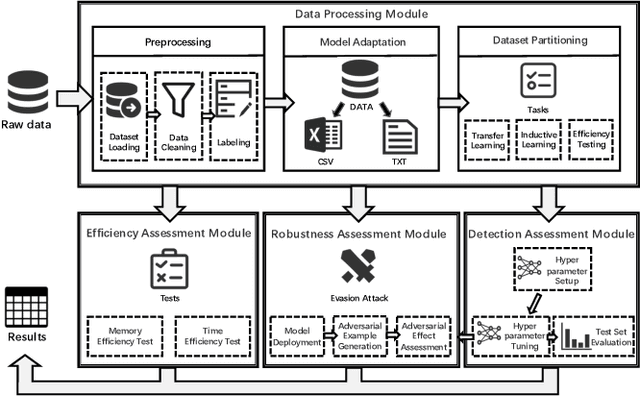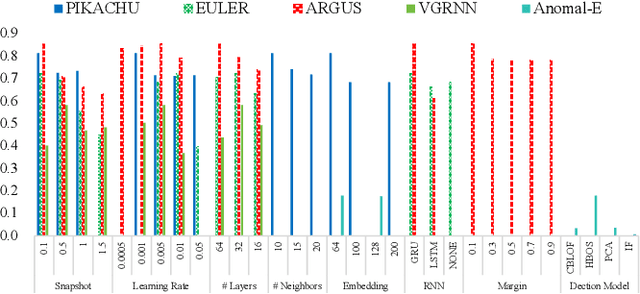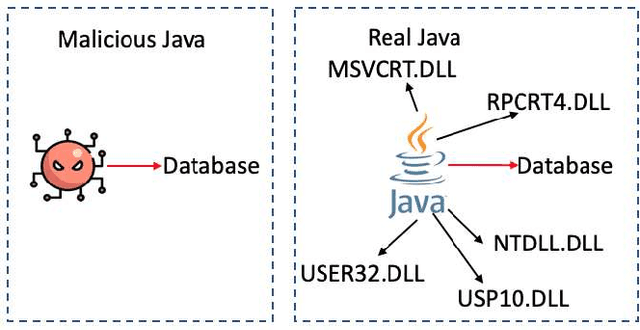Jiaping Gui
Are We There Yet? Unraveling the State-of-the-Art Graph Network Intrusion Detection Systems
Mar 26, 2025



Abstract:Network Intrusion Detection Systems (NIDS) are vital for ensuring enterprise security. Recently, Graph-based NIDS (GIDS) have attracted considerable attention because of their capability to effectively capture the complex relationships within the graph structures of data communications. Despite their promise, the reproducibility and replicability of these GIDS remain largely unexplored, posing challenges for developing reliable and robust detection systems. This study bridges this gap by designing a systematic approach to evaluate state-of-the-art GIDS, which includes critically assessing, extending, and clarifying the findings of these systems. We further assess the robustness of GIDS under adversarial attacks. Evaluations were conducted on three public datasets as well as a newly collected large-scale enterprise dataset. Our findings reveal significant performance discrepancies, highlighting challenges related to dataset scale, model inputs, and implementation settings. We demonstrate difficulties in reproducing and replicating results, particularly concerning false positive rates and robustness against adversarial attacks. This work provides valuable insights and recommendations for future research, emphasizing the importance of rigorous reproduction and replication studies in developing robust and generalizable GIDS solutions.
BackdoorMBTI: A Backdoor Learning Multimodal Benchmark Tool Kit for Backdoor Defense Evaluation
Nov 17, 2024



Abstract:We introduce BackdoorMBTI, the first backdoor learning toolkit and benchmark designed for multimodal evaluation across three representative modalities from eleven commonly used datasets. BackdoorMBTI provides a systematic backdoor learning pipeline, encompassing data processing, data poisoning, backdoor training, and evaluation. The generated poison datasets and backdoor models enable detailed evaluation of backdoor defense methods. Given the diversity of modalities, BackdoorMBTI facilitates systematic evaluation across different data types. Furthermore, BackdoorMBTI offers a standardized approach to handling practical factors in backdoor learning, such as issues related to data quality and erroneous labels. We anticipate that BackdoorMBTI will expedite future research in backdoor defense methods within a multimodal context. Code is available at https://anonymous.4open.science/r/BackdoorMBTI-D6A1/README.md.
Structural Temporal Graph Neural Networks for Anomaly Detection in Dynamic Graphs
May 25, 2020



Abstract:Detecting anomalies in dynamic graphs is a vital task, with numerous practical applications in areas such as security, finance, and social media. Previous network embedding based methods have been mostly focusing on learning good node representations, whereas largely ignoring the subgraph structural changes related to the target nodes in dynamic graphs. In this paper, we propose StrGNN, an end-to-end structural temporal Graph Neural Network model for detecting anomalous edges in dynamic graphs. In particular, we first extract the $h$-hop enclosing subgraph centered on the target edge and propose the node labeling function to identify the role of each node in the subgraph. Then, we leverage graph convolution operation and Sortpooling layer to extract the fixed-size feature from each snapshot/timestamp. Based on the extracted features, we utilize Gated recurrent units (GRUs) to capture the temporal information for anomaly detection. Extensive experiments on six benchmark datasets and a real enterprise security system demonstrate the effectiveness of StrGNN.
Heterogeneous Graph Matching Networks
Oct 17, 2019



Abstract:Information systems have widely been the target of malware attacks. Traditional signature-based malicious program detection algorithms can only detect known malware and are prone to evasion techniques such as binary obfuscation, while behavior-based approaches highly rely on the malware training samples and incur prohibitively high training cost. To address the limitations of existing techniques, we propose MatchGNet, a heterogeneous Graph Matching Network model to learn the graph representation and similarity metric simultaneously based on the invariant graph modeling of the program's execution behaviors. We conduct a systematic evaluation of our model and show that it is accurate in detecting malicious program behavior and can help detect malware attacks with less false positives. MatchGNet outperforms the state-of-the-art algorithms in malware detection by generating 50% less false positives while keeping zero false negatives.
 Add to Chrome
Add to Chrome Add to Firefox
Add to Firefox Add to Edge
Add to Edge